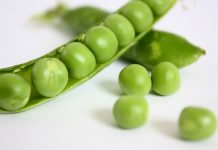
If the infant is on formula, that may be contributing. Either switch the infant to whole milk if there is no milk allergy or add 1 – 2 tsp of dark Kayro syrup to every 8 ounces of formula.
Toddlers don’t like raw vegetables because they don’t have molar teeth to grind raw vegetables. They usually only have front teeth to bite with. Foods like cooked oatmeal or oat based cereals (Cheerios) contain pectin (soluble fiber) which holds more water in the stool. Whole wheat bread and crackers, cooked vegetables and canned fruits or juice will add fiber to the toddler’s diet. Cooked vegetables have as much fiber (insoluble) as the fresh version. Insoluble fiber is not destroyed by cooking.
Canned pears have more fiber than a fresh apple including the peel. Other canned fruits are lower in fiber content than fresh because the peel has been discarded in most canned fruits other than canned plums (pitted).
Be careful to not overdo the fiber content of the baby’s diet though. Would also recommend for the time avoiding gas forming vegetables like broccoli, cauliflower, Brussels sprouts, cabbage and baked beans even in the cooked form. These foods should be reintroduced into the baby’s diet once constipation has been resolved.
Avoid constipating foods like rice (cooked or cereal), bananas, apple juice, applesauce or tea. These are the foods we feed children with diarrhea as they are constipating. Reintroduce these foods into the baby’s diet after constipation has been resolved. Do not omit these foods forever.
Also, make sure to provide the baby with enough water in addition to formula or milk. The amount of fluid recommended for babies starting at 22 pounds is 1.5 ounces of fluid per pound of body weight per day or 1 cup of fluid for every 5.5 pounds of body weight up to 44 pounds of body weight. So take the baby’s weight and divide by 5.5 to get the number of cups of fluid per day. For children, over 44 pounds provide 8 cups of fluid per day. The total amount of fluid should include formula or milk that the baby drinks as well as fruit juices and water.



